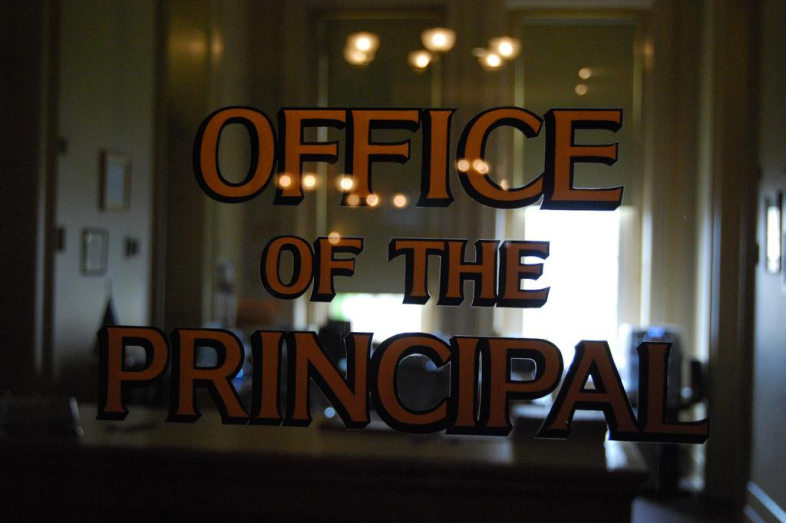

Ever since my second week living in the District of Columbia, when I found myself alone on a commuter train the conductor had apparently deemed malfunctioning while I was lost in my music, I like to keep all five senses focused on my surroundings.
But on Monday, I decided to give the headphones another try. I’d heard good things about the podcast “This American Life” and decided to download the latest episode from Oct. 17 – “Is This Working?”
The podcast launched into a discussion on how students are disciplined in schools, first by interviewing experienced teachers who admitted to “winging it” – even going so far as to throw shoes at a student who wore a hat one time too many in class. Then, Producer Chana Jaffe-Walt interviewed Tunette Powell, author of the viral blog post, “Is My Black Preschooler Just Another Statistic?”
Powell says her 4 year old was suspended multiple times from his preschool for relatively minor infractions, like ignoring a teacher and pushing a chair. Another child in her son’s class – a white student — had earned only a phone call home to his parents after hitting another child, sending that student to the hospital.
Unfortunately, this didn’t shock me. As a reporter, I covered the Obama administration’s release of federal guidelines in January that came after U.S. Department of Education investigations revealed that black students were disciplined more harshly and more frequently than white students in similar situations. Two months later, the department issued a report stating black children make up 18 percent of preschoolers, but they comprise 48 percent of preschool children suspended more than once.
In all these discussions, I missed considering whether Latino students would likely have similar experiences in their schools’ disciplinary systems. So when Joffe asked listeners, “Are black and Latino kids really punished more in school and ending up in prison because of it?” my interest was piqued.
In 2011, researchers at Texas A&M University found that black and Latino students, were twice as likely to receive an out-of-school suspension for their first offense than their white peers, Joffe said. They used data collected by the state, which had kept tabs on every public school seventh grader in 2000, 2001 and 2002 until their high school graduation. Things like race, grades, school changes and disciplinary actions were all recorded.
The American Civil Liberties Union’s Pennsylvania chapter also recorded disproportionate suspensions among Latino and black students in a November 2013 report. There, one in 10 Latino students had been suspended at least once.
Joffe also interviews sociologist Pedro Noguera, who said over the past few decades, suspensions have become the go-to move in response to disruptive behavior — for everyone, but especially black and Hispanic kids.
The federal guidelines cite a discrimination complaint filed after two sixth grade students — one Hispanic and the other non-Hispanic — fought at school. Both students had similar disciplinary histories — after-school detentions for minor infractions — but the Hispanic student got a three-day out-of school suspension while his non-Hispanic opponent received a two-day punishment.
In all but one of the 10 largest school districts in California, the Office of Civil Rights found black and Hispanic students are suspended and expelled at rates far exceeding their numbers, the Mint Press News reported in May. Among the population of white students, the equivalent rates were considerably lower than their numbers.
“Black students compose 11.9 percent of the total enrollment in San Francisco, but accounted for 42.5 percent of out-of-school suspensions and 60 percent of all expulsions. In the Capistrano School District, Hispanics, who make up 24.6 percent of the student population, accounted for all five expulsions,” the article states.
What actions led to these suspensions and expulsions?
“Alarming numbers of young people are suspended, expelled or even arrested for relatively minor transgressions like school uniform violations, schoolyard fights or showing ‘disrespect’ by laughing in class,” Attorney General Eric Holder said in January.
Suspensions have always confused me. Why punish — or “reward” – students who might be misbehaving with a day of out of school? So they get behind in their work?
“Denying them learning time, which is, I think, the most ridiculous part of it,” Noguera said.
The result? If the recent federal data are any indication, suspensions contribute to the achievement gap and high dropout rates for the students in question — blacks, Latinos and students with disabilities who are disproportionately slapped with these punishments.
“There’s this assumption that, if we get rid of the bad people, that the good people will be able to learn, the good people will be safe,” Noguera continued. “What we continue to ignore is that we are producing the bad people. We’re producing in school the bad behavior.”